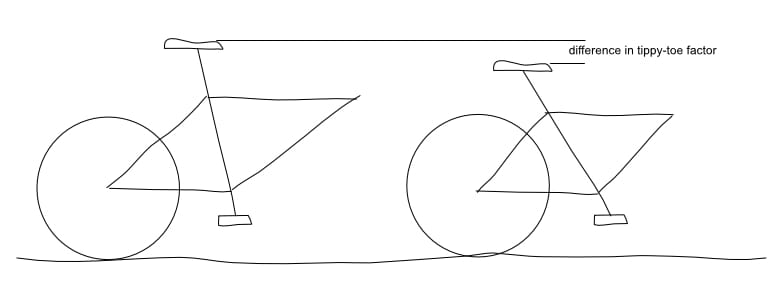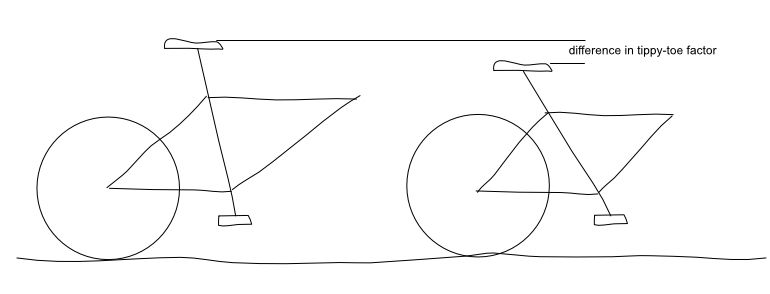The one bit of bike geometry that matters
Bike geometry is a whole giant rabbit warren, and should you want to study it, all power to you. However, if you just want to get a bike that rides really well there's one bit of bike geometry that you should pay attention to: the seat tube angle.

There are so many different bikes to choose from. Too many, maybe. Or maybe too many that are so close to identical that they're effectively the same. Or maybe that's a good thing, because it means you can pick the one that feeeeeeels the best. And a good feeling bike, is what really counts - assuming it meets safety standards.
Bike geometry is a whole giant rabbit warren, and should you want to study it, all power to you. However, if you just want to get a bike (especially if it's your first bike as an adult), that rides really well there's one bit of bike geometry that you should pay attention to: the seat tube angle.
The seat tube angle is the angle, from horizontal, of the seat tube - the bit of the frame that has the pedals connected to it at the bottom and the seat-post poking out the top. I think this is the most important bit of geometry because it determines how much you feel like you have to tippy-toe when you reach for the ground. I call it the tippy-toe factor.

Consider these poorly drawn bicycles. Both have the same distance from the pedal to the seat, and the same ground clearance. Both are also missing critical components, but my artistry isn't that great. The biggest difference here, is the distance between the ground and the seat.
With a bike with a slack seat tube angle, like the one on the right, when you need to stop with the bike, you're more likely to be able to reach the ground while you're still in the seat of the bike. This is comfortable, reassuring, and safe. (It's also slightly less efficient from a pedalling perspective, but this isn't Le Tour. This is fun, low emission transport, not a race.)
While you'll find slack seat tube angles on most Dutch style bikes, some have copied the look of a Dutch bike, while retaining aggressive mountain bike geometry. This isn't ideal, and you should check the numbers on the bike you're buying and make sure they're around 65°. Or test ride it at a shop that you trust.